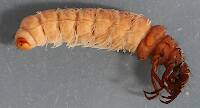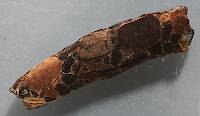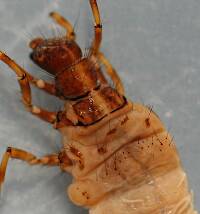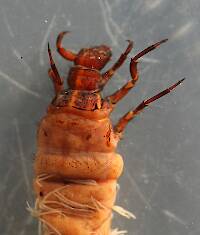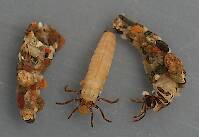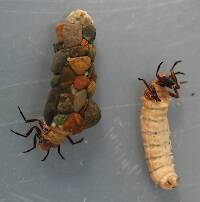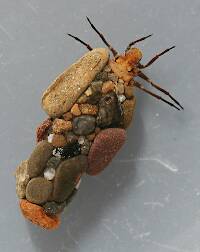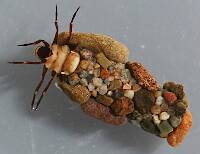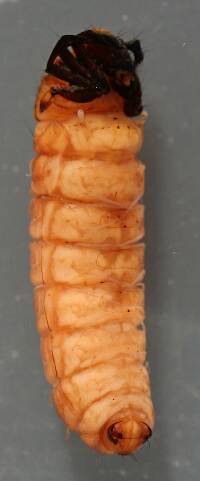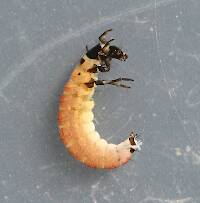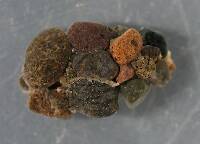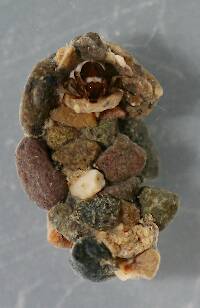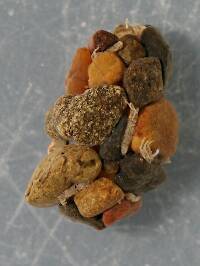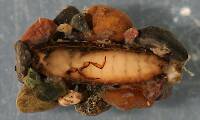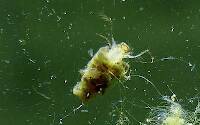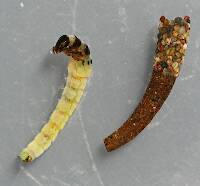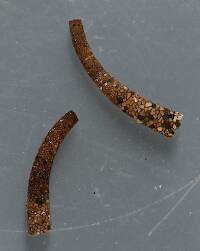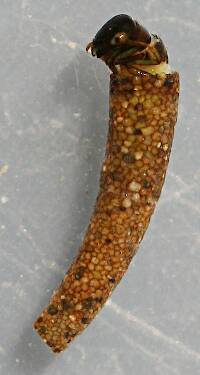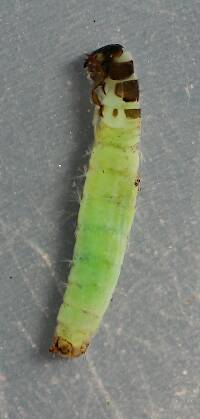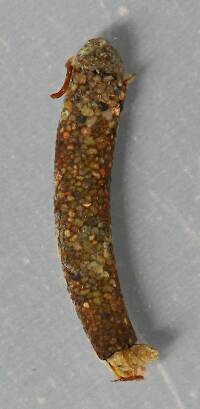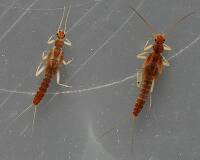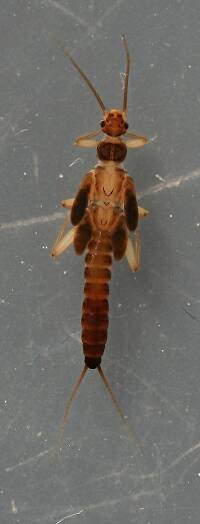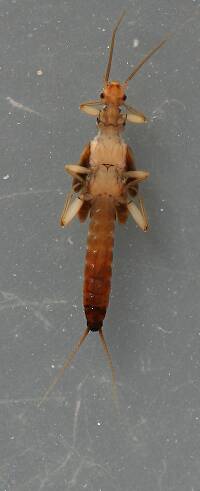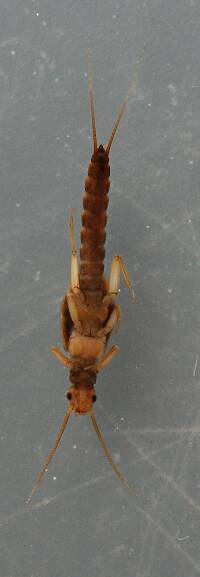
Hex Mayflies
Hexagenia limbata
The famous nocturnal Hex hatch of the Midwest (and a few other lucky locations) stirs to the surface mythically large brown trout that only touch streamers for the rest of the year.
Featured on the forum

This is an interesting one. Following the keys in Merritt R.W., Cummins, K.W., and Berg, M.B. (2019) and Jacobus et al. (2014), it keys clearly to Ephemerella. Jacobus et al provide a key to species, but some of the characteristics are tricky to interpret without illustrations. If I didn't make any mistakes, this one keys to Ephemerella mucronata, which has not previously been reported any closer to here than Montana and Alberta. The main character seems to fit well: "Abdominal terga with prominent, paired, subparallel, spiculate ridges." Several illustrations or descriptions of this holarctic species from the US and Europe seem to match, including the body length, tarsal claws and denticles, labial palp, and gill shapes. These sources include including Richard Allen's original description of this species in North America under the now-defunct name E. moffatae in Allen RK (1977) and the figures in this description of the species in Italy.

Troutnut is a project started in 2003 by salmonid ecologist Jason "Troutnut" Neuswanger to help anglers and
fly tyers unabashedly embrace the entomological side of the sport. Learn more about Troutnut or
support the project for an enhanced experience here.
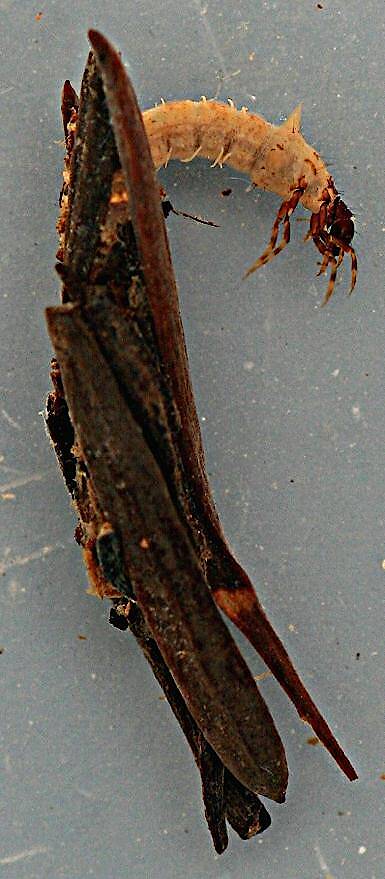

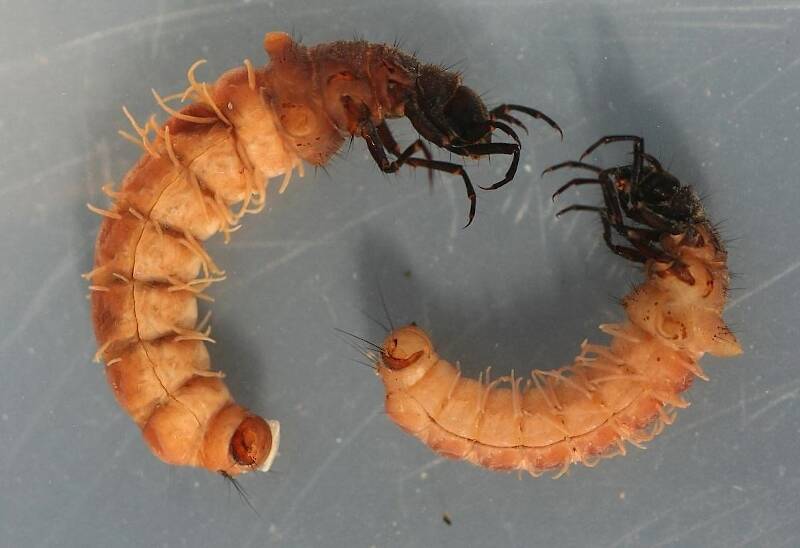
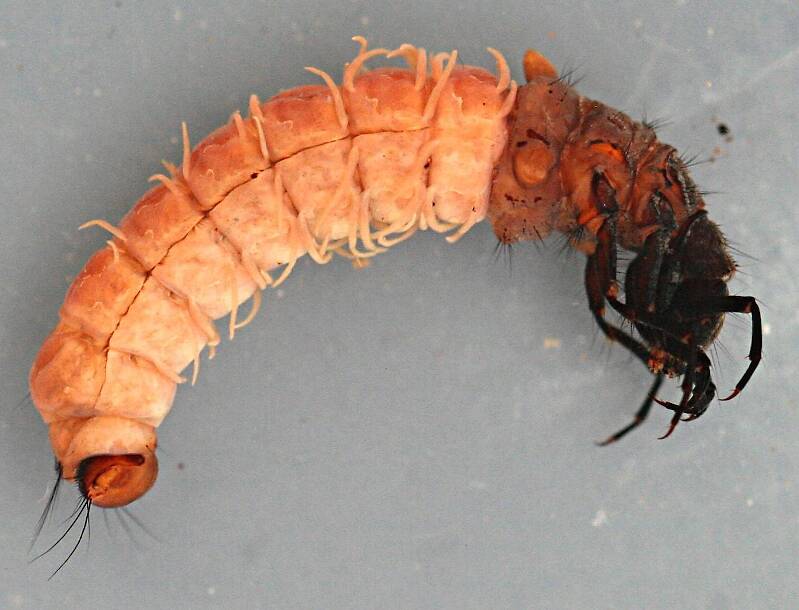
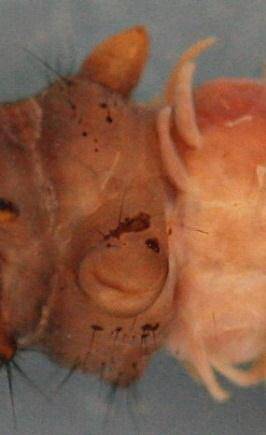
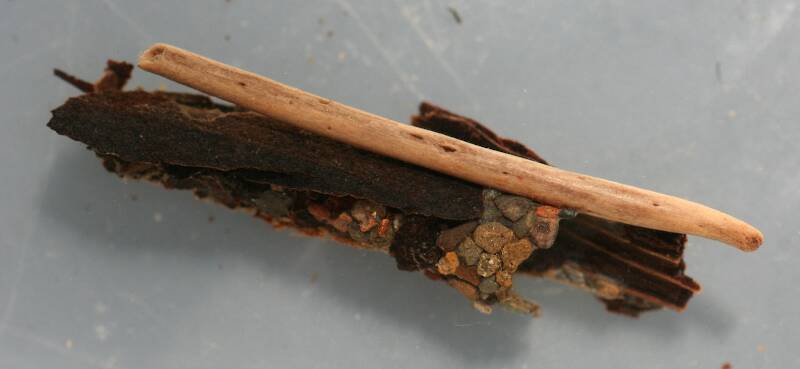
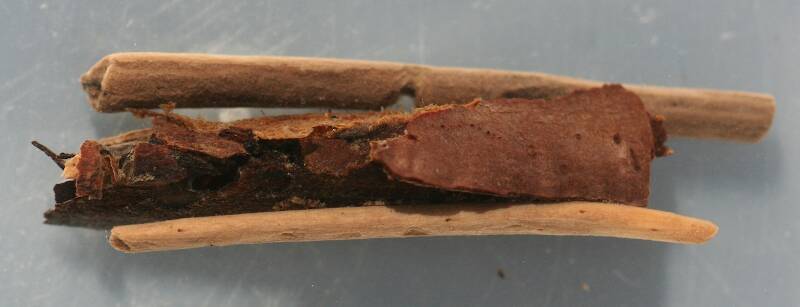
Millcreek on Mar 23, 2015March 23rd, 2015, 3:57 pm EDT
These larvae are found in slack water and pools in Mill Creek (tributary to the Russian River). They begin to show around March and are pretty much gone by September. The cases change from small ones with redwood or Douglas fir needles to larger ones incorporating pieces of bark, small pieces of gravel and relatively large sticks.
"If we knew what it was we were doing, it would not be called research, would it?"
-Albert Einstein
-Albert Einstein
Creno on Mar 23, 2015March 23rd, 2015, 6:09 pm EDT
looks like at least two species there - the one at the top has banded legs. There are lots of species that are quite difficult to separate. It is likely that many records have been mis-determined. Most species don't have adequately described larvae.
Millcreek on Mar 23, 2015March 23rd, 2015, 6:59 pm EDT
Yeah, the one at the top apparently is different. It would be interesting to
see if they change as they get older. Other than the banded legs they appear quite similar.
see if they change as they get older. Other than the banded legs they appear quite similar.
"If we knew what it was we were doing, it would not be called research, would it?"
-Albert Einstein
-Albert Einstein
Creno on Mar 23, 2015March 23rd, 2015, 8:08 pm EDT
I don't think things like leg banding coloration will change. The color patterns should get more distinct with later instars. Most changes will occur with the addition/size of secondary setae/gills with later instars.
Millcreek on Mar 23, 2015March 23rd, 2015, 8:39 pm EDT
Interesting. I'm going to have to go back to my vials and see if I can find some with banded legs as later instars. Also see if other changes occur. I'll keep you posted.
"If we knew what it was we were doing, it would not be called research, would it?"
-Albert Einstein
-Albert Einstein
Crepuscular on Mar 24, 2015March 24th, 2015, 2:41 am EDT
nice
Millcreek on Mar 24, 2015March 24th, 2015, 8:38 am EDT
I went back and looked through my vials. Found the original one with banded legs. It was the only one out of about 70 with banded legs. Either an aberration or another species. The others of that age range were quite close in appearance except for the legs.
"If we knew what it was we were doing, it would not be called research, would it?"
-Albert Einstein
-Albert Einstein
PaulRoberts on Mar 24, 2015March 24th, 2015, 4:34 pm EDT
The "non-mammalian protrooberances" are different too. The dorsal hump on the first is nearly a spike. Nifty.
Millcreek on Mar 24, 2015March 24th, 2015, 7:37 pm EDT
The "non-mammalian protrooberances" are different too. The dorsal hump on the first is nearly a spike.
The "protooberances" are the same on all early instars. They get blunter as the larva matures.
"If we knew what it was we were doing, it would not be called research, would it?"
-Albert Einstein
-Albert Einstein
Creno on Mar 25, 2015March 25th, 2015, 11:07 am EDT
The spacing humps of the 1st abdominal segment ("non-mammalian protrooberances" thought to be useful in respiration) are highly flexible, muscled, and, when viewed closely, have many small scales, setae, etc. They are retractile/extensile and, as such,the shape would be expected to be highly variable within both live and preserved material. I am not aware of the actual shape of the spacing humps having been used for taxonomic significance although their presence/absence, setation, scleritization, etc. is often used.
Jmd123 on Mar 25, 2015March 25th, 2015, 7:45 pm EDT
"non-mammalian protrooberances"
OK guys, I jut have to laugh...does this remind anyone else of Frank Zappa??? LOL seriously!!!
;oD
Jonathon
OK guys, I jut have to laugh...does this remind anyone else of Frank Zappa??? LOL seriously!!!
;oD
Jonathon
No matter how big the one you just caught is, there's always a bigger one out there somewhere...
Quick Reply
Related Discussions
Topic
Replies
Last Reply
2
Feb 2, 2018
by PaulRoberts
by PaulRoberts
1
Sep 5, 2006
by Troutnut
by Troutnut
4
Oct 29, 2014
by Millcreek
by Millcreek
14
Sep 26, 2013
by Crepuscular
by Crepuscular





